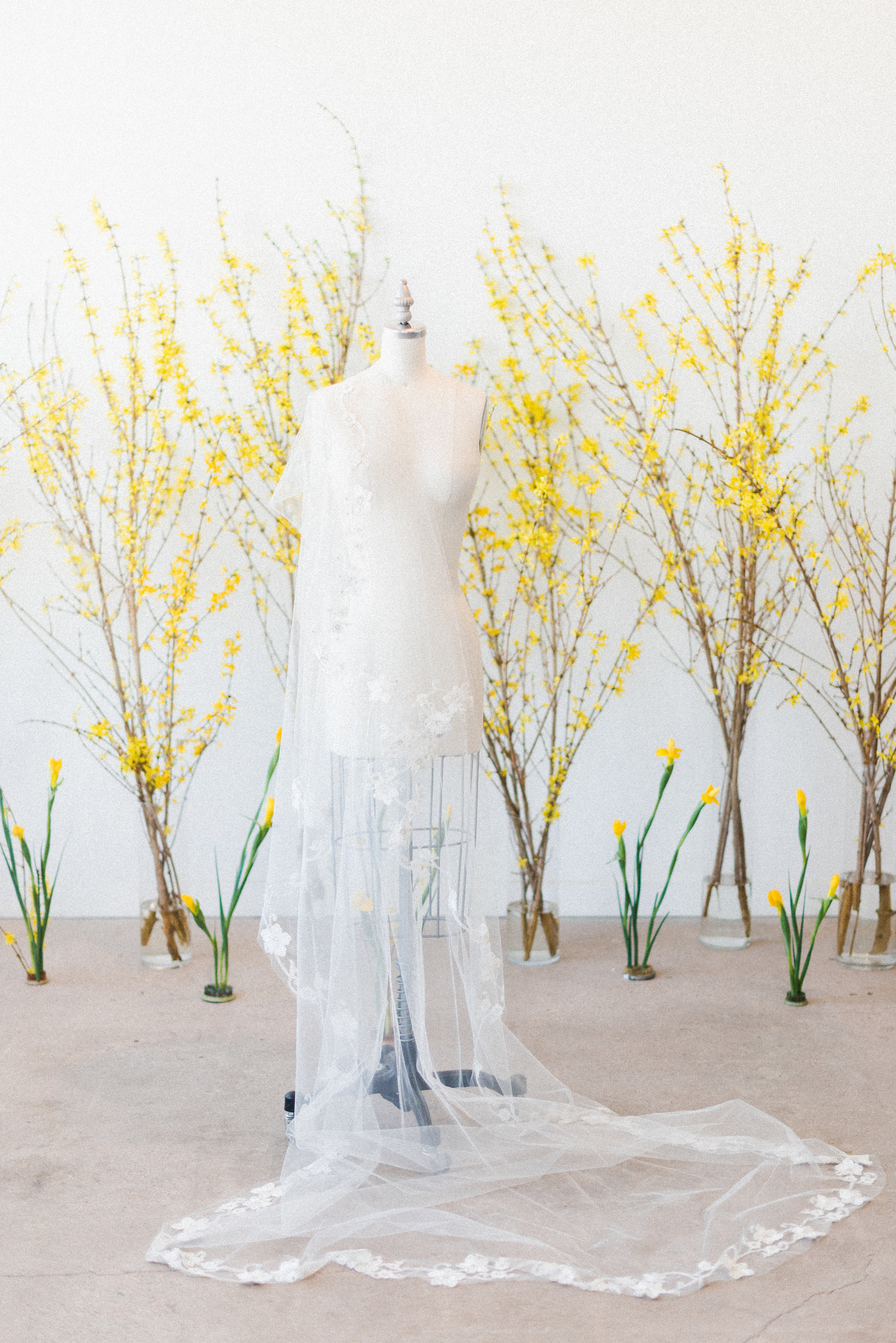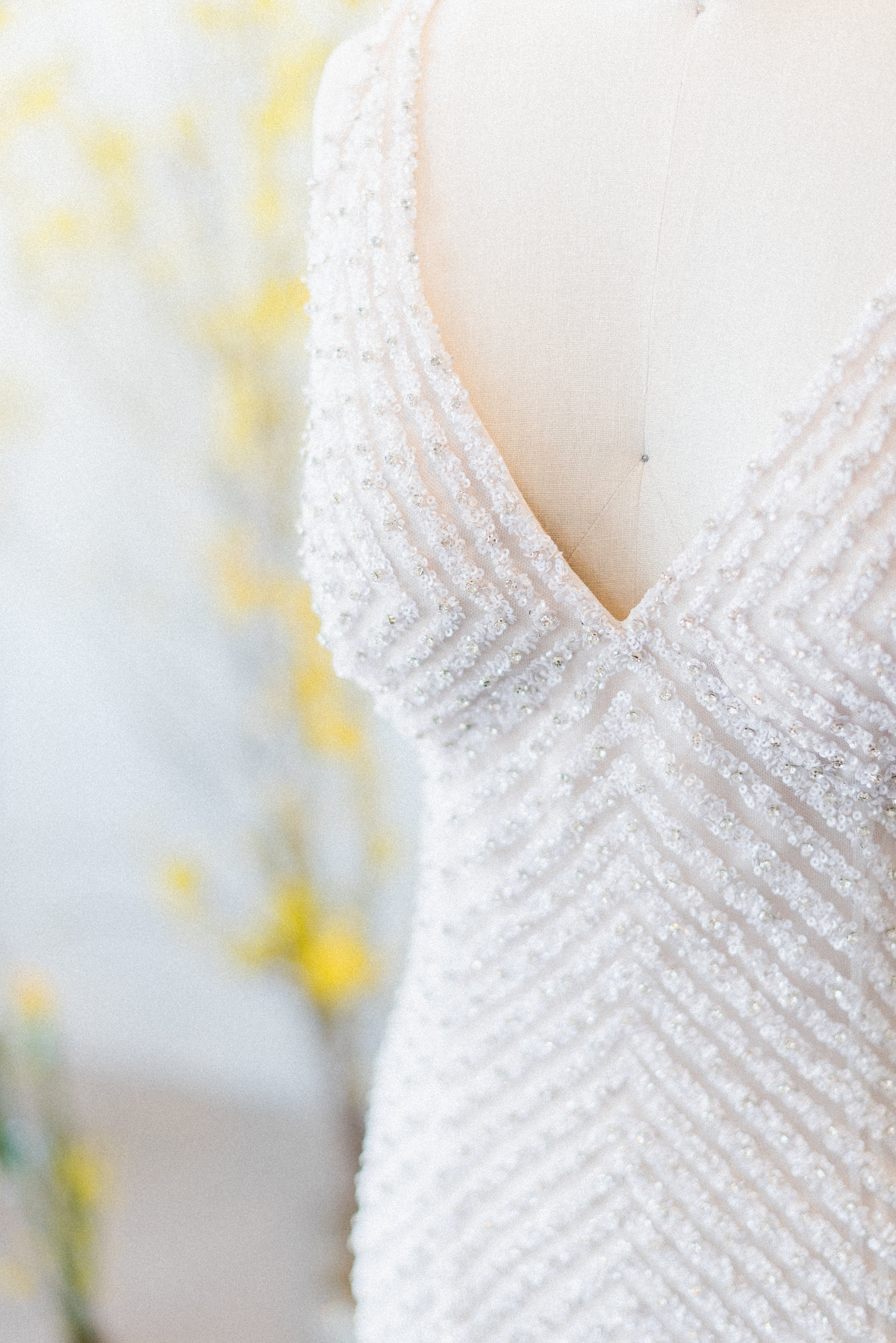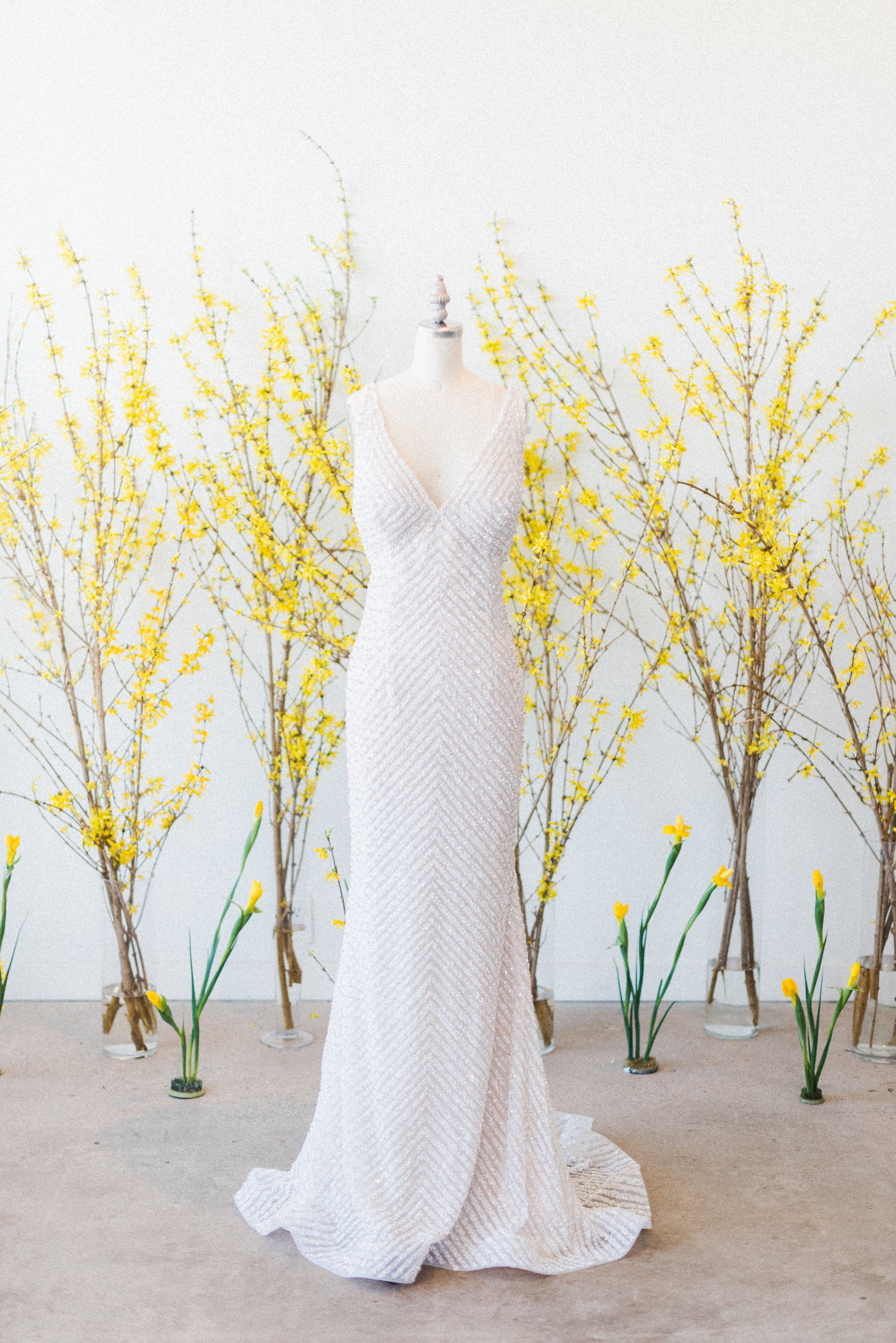LWD Alterations Featured on Style Me Pretty!
Our very own Alterations Manager, Gail, was interviewed for a Style Me Pretty piece on bridal alterations! Most women have never had a gown custom fit to them until their wedding, so bridal alterations is new territory for the vast majority of our brides. Part of our job is to educate our brides about what to expect during this process - and of course, to then complete your expert alterations with our in-house Alterations Department. Gail shared her expertise and advice in this great article, so all brides can learn a little more about the process.
Check out the article below and via this link!
It's a universal truth of wedding dresses: unless a wedding gown is custom-made for you, your gown is going to need alterations. For some brides who have never had a garment tailored, this process can be daunting. We've gathered some experts, Carmen Duerr, head of alterations and co-owner of The White Room and Gail Bernal, Alterations Manager at Little White Dress Bridal Shop, to help break it down!
The Gown Alteration Process
According to Gail from Little White Dress, "the alteration process should begin three months before the wedding, typically with three fittings. Before the first [fitting] we need the bride to have her shoes and undergarments, then during the second and third we discuss any items still needed (different shoes or bra etc). At the second fitting the work is done but not finished, we assess and refine and then finish the dress, including a final press for the third fitting."
Carmen, of The White Room, goes into further detail: "During the first alteration appointment, we do ask that the bride bring the undergarments and shoes she will be wearing on her wedding day. We look at the overall fit of the dress and discuss any custom changes. At this time we choose the correct size of bra cups to insert in the dress. The second fitting is to check the fit of the prior work and do any tweaking. At this point, the overall fit should be correct and we can measure the hem and discuss bustles. The final fitting is the demonstration of how to bustle the dress. It is the final viewing with all the elements, from veil to any chosen accessories."
Common components of gown alterations:
Bustles
Gail clearly defines the different types of bustles as "the French, done with ribbons on the inside, folds under and the American, attaches to buttons on the outside, and Ballroom folds under at the bottom." The most widely chosen style of bustle at The White Room is the French bustle. "It works well with weighty silk crepes and heavier lace, dispersing the weight. And it adds a soft elegance to the train," explains Carmen. "The under bustle also works well with our lighter fabrics, like 4 ply silk and silk satin."
Tapering/taking in
"Taking in is done usually at the sides but can also be done on any seam," Gail explains. A gown may need to be taken in at different points depending on your body type. For example, if it fits in your waist but you're smaller on top and need to have it adjusted.
Bust cups
"Bust cups are added to the dress to do the work of a bra and are placed on top of the lining next to the skin", according to Gail. Carmen recommends "trying a couple different types to get the desired shape and smoothness. Sometimes two cups are needed for that extra support."
Boning
Gail defines boning as "plastic or steel that reinforces areas that need structure to stay up, usually in the bodice of strapless dresses." Carmen goes further to say, "Boning is perfect when you want that structured, supported bodice. However, it is not always a possibility and may just show through the construction. It is safe to say if it doesn't already have it built in, it may look awkward to change the design."
Managing expectations
There is a lot that a seamstress can change on a gown, but unfortunately, your gown is not made of magic. "We can change a lot on the dress," explains Gail, "adding sleeves, lace, boleros or taking away these design elements. A bride should not expect the change the basic shape of a dress, for instance, it is not a good idea to turn a ballroom gown into a trumpet."
Finally, offering some sage advice about managing expectations, Carmen adds, "The discussion of what changes can be made to the dress should always be discussed before purchasing. A great amount can be done to get the desired look, but if I could express one thing to my brides, it's that the dress is never going to look exactly as it does on the model in the magazine or on the website. If there is something she is noticing or dislikes, do not hesitate to point it out to the seamstress. It also builds a comfortable relationship for both."



